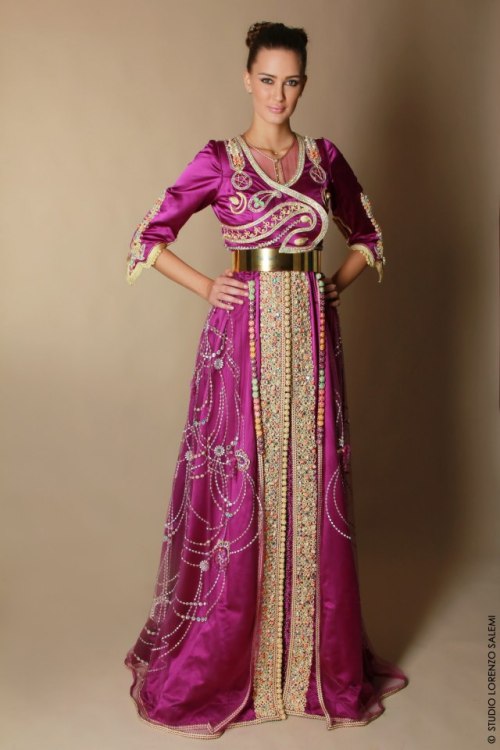Morocco should stop interfering with the right of its citizens to give Amazigh names to their children, Human Rights Watch said today.

"Morocco has taken steps to recognize Amazigh cultural rights," said Sarah Leah Whitson, Middle East and North Africa director at Human Rights Watch. "It now needs to extend that recognition to the right of parents to choose the name of their child."

Morocco's Law on the Civil Registry stipulates that a first name must have "a Moroccan character." Local administrators apparently interpret that requirement to mean names that are Arabic-Islamic, even though the Amazigh people are native to Morocco. The law gives parents the right to appeal a refusal in court and to the High Commission of the Civil Registry. Over the years, the commission has ruled on dozens of Amazigh, European, and other non-Arabic-Islamic names, accepting some and rejecting others.
The five cases documented in the Human Rights Watch letter, involving both residents of Morocco and émigrés living abroad, resulted ultimately in victories for the parents. But they succeeded only after bureaucratic delays and lengthy appeals, sometimes enduring hostile or humiliating questions from Moroccan civil servants and the insecurity of having a newborn who, for months, had no legal identity.
"We are happy that these parents prevailed, but no couple should have to fight their government, at this special time in their life, to be able to name their baby," Whitson said.
On August 26, a first instance court in Tahla (province of Taza) court approved an Amazigh name in a sixth case, allowing Abdallah Bouchnaoui and Jamila Aarrach, to name their five-month-old daughter "Tiziri," which means "moon" in Tamazight, the Amazigh language. The victory came only after the couple, who live in the commune of Zerarda in the Middle Atlas, had endured months of uncertainty.
For a seventh couple, the uncertainty continues. On March 11, Rachid Mabrouky went to the civil registry in the Saâda district of Marrakesh to register his two-day-old daughter as "Gaïa." Mabrouky told Human Rights Watch that the official on duty refused to accept the name, contending that it was "not Moroccan." Mabrouky went to the civil registry at the city's prefecture, only to be told the same thing.
When he explained that the name "Gaïa" was Amazigh and therefore Moroccan, the agent on duty persisted in his refusal, exclaiming, "You Amazigh are all fanatics," Mabrouky said. Mabrouky and his wife, Lucile Zerroust, who is French, filed a case in administrative court, where the case is still pending. "Gaïa" is the name of an ancient Berber prince.
Parents of an infant who is not recorded by the civil registrar may face obstacles when applying for a passport for the child, reimbursement by state medical insurance, or other services. Parents who persist in demanding that the government record Amazigh names tend to be Amazighs who are politically active. They say that for every couple like themselves, there are others who avoid giving their children Amazigh names, fearing a humiliating refusal from local officials followed by administrative problems.
The Amazigh are the indigenous people of North Africa and are overwhelmingly Muslim. Today, the two largest Amazigh populations are in Morocco and Algeria, where some are actively engaged in seeking cultural, linguistic, and political rights. In 2001, King Mohammed VI of Morocco created a Royal Institute of Amazigh Culture and began a program to teach the Tamazight language in schools.
Several Moroccans who are Amazigh told Human Rights Watch that when civil registry agents are presented with uncommon first names, they consult lists prepared periodically by the High Commission of the Civil Registry. These lists include dozens of non-Arab-Islamic names, each one marked "accepted" or "refused." Human Rights Watch has copies of some of these lists. According to the law, the commission is composed of representatives of the interior and justice ministries and the kingdom's official historian.
International jurisprudence supports the freedom to choose one's name. The United Nations' Human Rights Committee ruled in the 1994 case of Coeriel et al v. Netherlands, "Article 17 [of the International Covenant on Civil and Political Rights] provides, inter alia, that no one shall be subjected to arbitrary or unlawful interference with his privacy, family, home or correspondence. The Committee considers that the notion of privacy refers to the sphere of a person's life in which he or she can freely express his or her identity.... [This] includes the protection against arbitrary or unlawful interference with the right to choose and change one's own name."
"Unless a first name is patently offensive or objectionable or harmful to the interests of the child, authorities have no business curbing the right of parents to make this very personal choice - especially not when the curb amounts to a form of ethnic discrimination," said Whitson.
Human Rights Watch's letter to Minister of Interior Benmoussa, seeking information about the cases involving the naming of five Amazigh children - Ayyur Adam, Massine, Sifaw, Tara, and Tin-Ass - is online at: http://www.hrw.org/node/85427 (English); http://www.hrw.org/node/85429 (Arabic).
morocco culture,moroccan food,morocco food,moroccan cuisine,morocco beaches,moroccan meal,beaches in morocco,moroccan culture,hercules cave,hercules cave morocco













